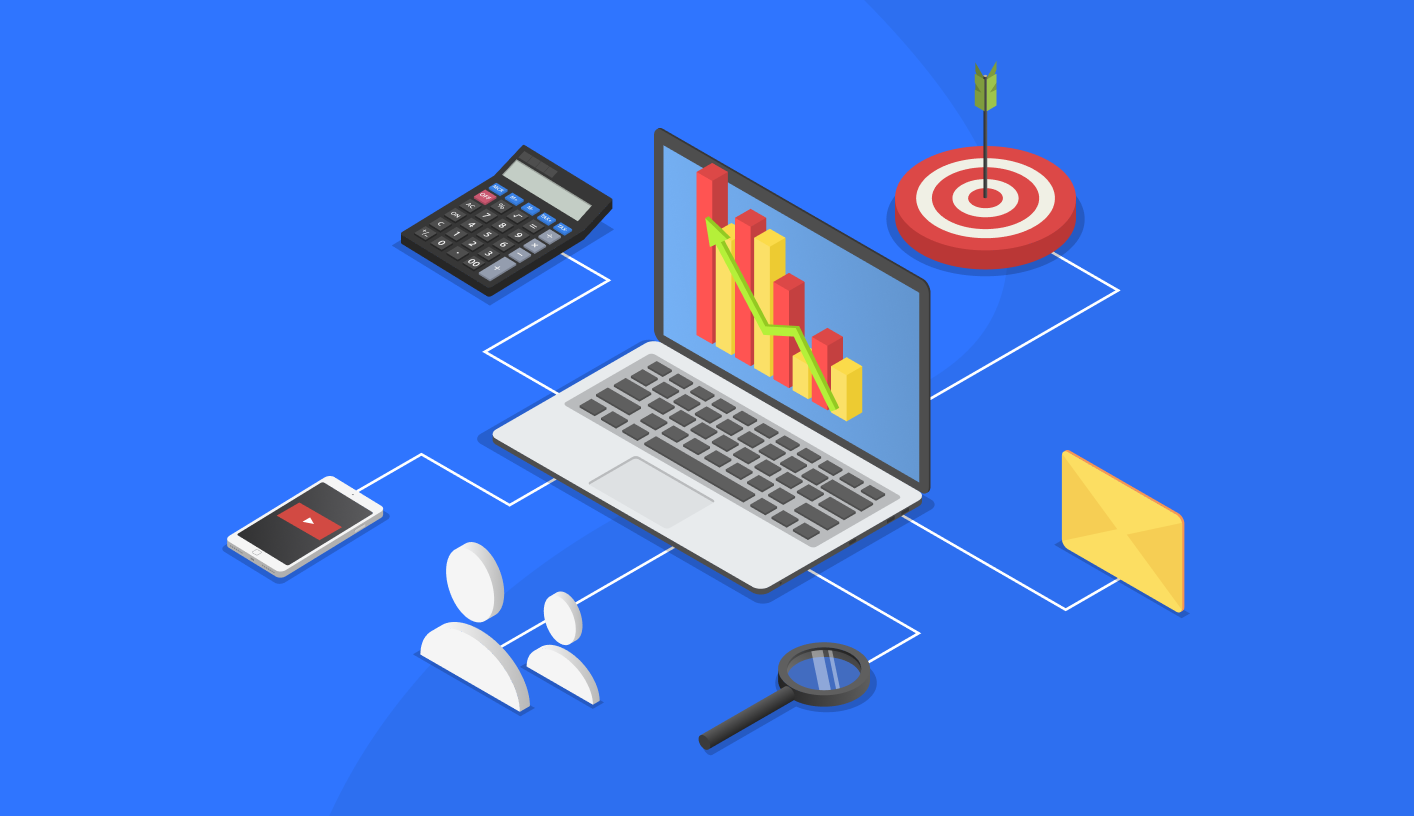What is Net Revenue Retention and How To Calculate?

Net revenue retention (NRR) measures the value derived from a business’s existing customers, and is one of the key metrics SaaS companies should track to drive growth.
If you’re new to the concept of net revenue retention, this post will provide you with everything you need to know about it, including how to calculate it. Let’s dive in.
What is net revenue retention?
Net revenue retention, or NRR, is a metric that SaaS companies use to determine the recurring revenue from existing customers over a specified period. It’s a good practice to calculate it monthly, quarterly and annually. This calculation is also sometimes called net dollar retention (NDR).
Within NRR, you’re looking at several drivers—existing customers that upgrade, downgrade, add services and churn.
There are a lot of revenue metrics, but NRR is essential because it accounts for all revenue you retain from current customers. These are the dollars that fuel long-term growth.
You want to make this a priority metric because it’s a key indicator of fast and sustainable revenue growth. It’s much more accurate than just looking at annual recurring revenue (ARR) or monthly recurring revenue (MRR).

NRR vs. customer retention rate (CRR)
NRR and customer retention rate (CRR) are great metrics that expand insights. However, they are different.
The customer retention rate is a calculation of the percentage of users you’ve kept over a period of time, usually a year. This metric is about the users you retain, not their revenue. NRR looks at these retained customers and determines the revenue from them.
Simply put, the difference is that one is a dollar amount, and the other is a number of users.
NRR vs. gross revenue retention (GRR)
Another key metric to compare to NRR is gross revenue retention (GRR). GRR calculates the total revenue minus customer churn. In GRR, you’re measuring the revenue within the confines of customer retention.
It won’t include upgrades if you’re just using gross revenue retention as a measuring stick. It only calculates the net change in monthly recurring revenue from customers who remain at the end of the prior month. NRR combines revenue from retention and expansion.
SaaS financial experts often debate which is better—NRR or GRR. However, the metrics support different business objectives. If you look specifically at expansion as the indicator, you may be missing the impact of churn. Thus, it’s always a good idea to calculate and monitor both.

How to calculate net revenue retention rate in SaaS
To calculate the net revenue retention rate, subtract lost revenue from total revenue, then divide it by your starting amount.
The net revenue retention formula looks like this:
NRR = starting MRR - contraction MRR - churn MRR + expansion MRR, all divided by starting MRR
These are the metrics that you need to consider while calculating NRR:
Monthly Recurring Revenue (MRR): The amount of recurring revenue your business predicts to earn every month
Expansion MRR: Calculation of the amount of expansion revenue, which includes upsells, cross-sells and add-ons from current customers within a month
Contraction MRR: Calculation of the decrease in revenue caused by existing customers within a month
Churn MRR: Measures how much revenue you lose from customer cancellations in a month
Why Is net revenue retention important?
Once you have net revenue retention, how will you use it? It applies to many areas of business, delivering insights.
NRR can indicate what products and solutions customers demand or aren’t hitting the mark. From this data, you can draw conclusions about a platform’s ability to engage users, meet their needs and be an essential tool they depend on. You can develop strategies to support and improve those products that aren’t clicking to grow your customer base.
NRR is also a way to understand customer retention and customer satisfaction. If your NRR is falling, churn impacts your revenue streams. Digging deeper into understanding why and your NRR numbers provides a full plate of data to analyze. Using all these sources ensures you’re better prepared to retain customers and mitigate lost revenue.
You can also use NRR to assess funding ability, long-term revenue and growth through retention. Further, it can quantify overall business health and financial performance. Comparing it with total revenue is another way to clearly understand revenue retention.
How to improve net revenue retention rate in SaaS companies
SaaS companies want to improve their net revenue retention rate, as with any metric. There are several initiatives to put in place that can help you achieve this.
Focus on account expansion
Remember, your existing customers are the best targets for upselling and cross-selling. Existing customers spend 67% more than new ones. They are already familiar with your company and software. If they are happy and satisfied, there are substantial opportunities for expansion revenue.
Reduce churned customers
Create new strategies to reduce churn in your SaaS business. First, you must determine why they are leaving, and churn surveys can offer insight into developing ways to minimize customer churn.

Your customer success team plays a big role here. Much of the friction comes from a lack of support (or perception of this). It creates trust and loyalty. When customers trust you, as many as 62% will stay loyal.
Push adopting features and upsells
This is another approach to achieving more expansion revenue. In-app contextual messaging can appear to remind users about additional features.
Improve customer onboarding and the customer experience
Onboarding and the customer experience are where customer retention starts. Personalizing it and making it relevant and continuous is critical.
Never stop “onboarding” or cultivating experiences for your customers. Do this with customer-only enablement content, training libraries, exclusive webinars and check-ins from your customer success team. The reward is that 90% of customers will spend more with companies that personalize these things.

Implement technology to help with retention
Adopting customer retention automation and a customer success platform are excellent ways to manage and measure NRR consistently. They can help businesses understand their customers’ behavior, preferences and needs, while a customer success platform can help businesses provide proactive support, analyze customer feedback and track customer success metrics.
Collect customer feedback
Ask customers what they like about your product and support and how you could improve. Use this feedback to enhance customer experiences and add new features.
Reward loyal customers
Make sure your customers understand their value by rewarding them. Rewards can work in several ways for SaaS companies. It could be that they can beta test new features, play a big role in your user groups or receive extra user licenses. The rewards don’t have to be big, just meaningful.
Reduce attrition
Giving users self-service options through a knowledge base or chatbot can answer their questions quickly. An exit survey can show why they’re leaving so you can pinpoint gaps in the product or support. Sending NPS scores at specific times during the customer journey, such as post-onboarding, after interaction with support or at renewal, also keeps you updated on the evolution of their satisfaction.
Incentivize customer success to push account expansion
Customer success can also be an extension of your sales team. They directly interact with customers and can mention other products or services that would be a good fit. If customer success receives incentives for this, they’ll ensure it’s part of every conversation.
What is a good net revenue retention rate in SaaS?
A good SaaS net revenue retention rate is above 100% or greater. At this level, the NRR indicates strong customer loyalty and consistent sales with your customer base. It’s also a sign that your SaaS business has lots of growth potential.
Net revenue retention benchmarks have differences depending on the company’s size. While 100% is typical for enterprise and mid-market companies, SMBs are usually around 85-90%.
Some SaaS industry benchmarks to consider in comparing your net retention rate include:
Snowflake: 158%
Twilio: 155%
Elastic: 142%
AppDynamics: 123%
Factors affecting NRR
Factors affecting NRR give critical insight into how businesses can maintain and grow their customer base. Let’s take a look at what impacts it.
Customer success and satisfaction
Customers must be happy and successful to maintain and increase your net revenue retention. Many things play into this, including the user experience, the ability for them to customize the software to meet their needs, the interactions with support and the overall usability of your solution.
Pricing and packaging strategies
Price is always a consideration in whether customers stay with you or leave. Price increases are normal, but sometimes they can cause churn. Be strategic in how you price your software and bundles. Remember that value matters significantly. Customers rated value for money as one of the leading reasons for remaining loyal.
Value grows when you add features and services. It’s impossible never to raise prices; most users will understand this.
Market conditions
Market conditions also impact NRR. If the industry you sell to is downturned, they may cut back on software fees. A price increase will be easier to swallow if it’s performing well.
You also have to consider the competitive landscape and if new providers are moving into your market that could steal your customers away. Then, you have to be defensive and possibly offer more incentives to stay that could lower your margins.
Measure NRR to understand your company’s performance
Consistently measuring net revenue retention and looking at other revenue metrics provides insights into revenue growth, customer retention and business health. The more numbers you have to assess, the better you can forecast growth.
If you start to see it slow, you must investigate why and then proactively address churn or obstacles in revenue expansion. A strong NRR demonstrates that you can maintain and grow revenue by delivering a product that meets your customers’ needs.
Learn more about improving your NRR and churn management with ProsperStack. Request a demo today.
